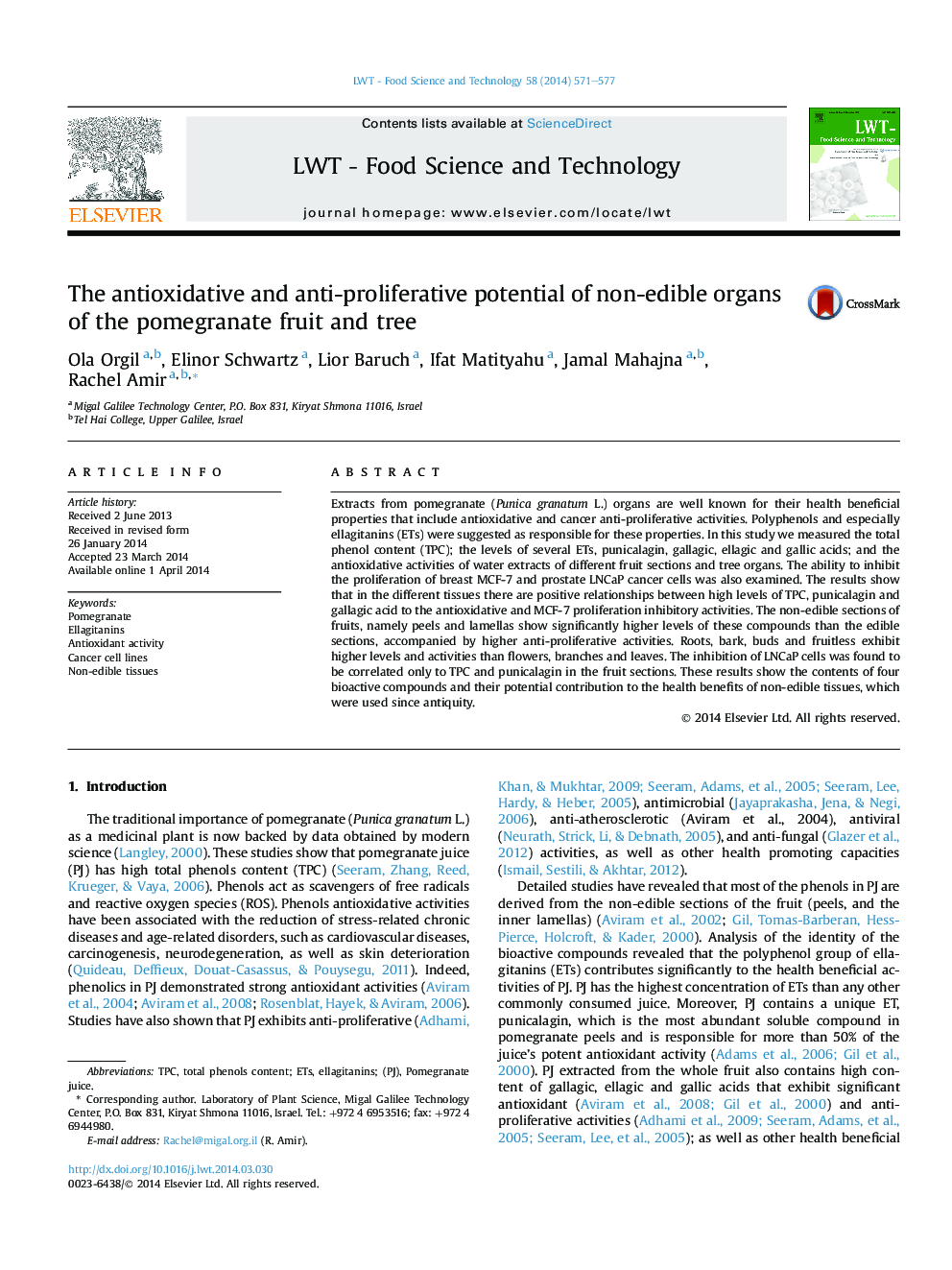| کد مقاله | کد نشریه | سال انتشار | مقاله انگلیسی | نسخه تمام متن |
|---|---|---|---|---|
| 6403299 | 1330893 | 2014 | 7 صفحه PDF | دانلود رایگان |
- Antioxidant capacity of non-edible pomegranate tree organs were measured.
- Bark, roots, fruitless and peels show high antioxidant capacity.
- These organs inhibit the proliferation of breast cancer cell line (MCF-7).
- Punicalagins and gallagic acid content correlate to the anti-proliferative activity.
- Potential of bioactive ellagitanins for improving human health is displayed.
Extracts from pomegranate (Punica granatum L.) organs are well known for their health beneficial properties that include antioxidative and cancer anti-proliferative activities. Polyphenols and especially ellagitanins (ETs) were suggested as responsible for these properties. In this study we measured the total phenol content (TPC); the levels of several ETs, punicalagin, gallagic, ellagic and gallic acids; and the antioxidative activities of water extracts of different fruit sections and tree organs. The ability to inhibit the proliferation of breast MCF-7 and prostate LNCaP cancer cells was also examined. The results show that in the different tissues there are positive relationships between high levels of TPC, punicalagin and gallagic acid to the antioxidative and MCF-7 proliferation inhibitory activities. The non-edible sections of fruits, namely peels and lamellas show significantly higher levels of these compounds than the edible sections, accompanied by higher anti-proliferative activities. Roots, bark, buds and fruitless exhibit higher levels and activities than flowers, branches and leaves. The inhibition of LNCaP cells was found to be correlated only to TPC and punicalagin in the fruit sections. These results show the contents of four bioactive compounds and their potential contribution to the health benefits of non-edible tissues, which were used since antiquity.
Journal: LWT - Food Science and Technology - Volume 58, Issue 2, October 2014, Pages 571-577
